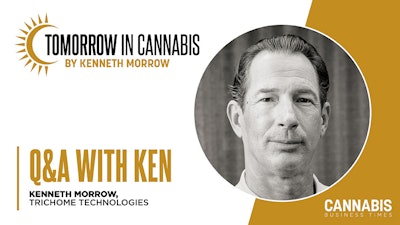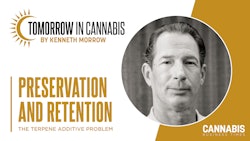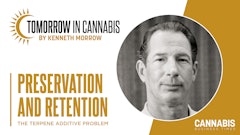
Question: Your Tomorrow in Cannabis column, “Drying and Curing Cannabis: A 2025 Update,” left me wondering how much moisture and terpenes were being lost at the trimming and packaging stages in my facilities, where we consistently produce over 1,000 pounds per month.
Over two cultivation cycles (so far), we tracked weight loss at those two processing stages and have discovered we are losing both moisture content and terpenes at both stages. Depending on the exact environmental conditions, there has been as much as 10 grams of moisture lost per pound across both stages.
That amount of moisture loss equates to tens of thousands of lost revenue per year, and leads to consumers receiving an inferior, overdried product. Could you elaborate on the proper conditions and equipment needed to minimize moisture and terpene loss in cannabis trimming and packaging environments?
Answer: I first encountered this problem many years ago while consulting with a Hayward, Calif., dispensary that retailed over $1 million in cannabis sales per month. The owners were noticing significant product loss at their packaging station. At first, they suspected theft, but after taking a closer look at the environment, it became obvious the loss could be attributed to evaporation.
Most growers understand they must precisely control the environment during the growing, drying, and curing stages of cannabis production. But many neglect doing the same in the trimming and packaging stages. This amount of moisture loss is negligible at the individual consumer level, but becomes very important when operating at scale because, as you pointed out, the larger the potential for moisture loss, the larger the potential for revenue loss.
The proper environmental conditions and parameters should be optimized for moisture preservation.
To find these parameters, I consulted with a leading post-harvest environmental control company. That company shared these figures as a baseline:
- Temperature: 68°F
- Humidity: 60%
- Dew point: 54°F
- Vapor pressure deficit (VPD): 14.2 millibars
Slight adjustments may be required to these depending on the local climate: West Coast California, Arizona, Colorado, and Michigan all have completely different regional climates that need to be considered. More arid locations may need higher humidity, while cooler climates may need slightly warmer temperatures.
To maintain consistency, you must employ a combination of heating, cooling, humidification, and dehumidification at all times. For air that is excessively dry (which will literally suck moisture from buds), fogging systems can be utilized to stabilize the humidity levels, in turn minimizing or eliminating the possibility of moisture loss.
For excessively humid environments, a new dehumidification method called reheat can dehumidify an environment without unwanted heat. Reheat circulates air through a finned condenser that turns the moisture in the air into a fluid that can be drained. The dried air is then reheated to the desired temperature and reintroduced into the environment from which it came. This method can be more efficient than utilizing standard dehumidifiers.
Some companies offer environmental control equipment specifically designed for trimming and packaging rooms.
Whatever your exact settings and systems ultimately become, maintaining consistency is key. A fluctuation in any of these variables causes the resin glands to expand and contract, encouraging moisture and volatile oil evaporation.
Kenneth Morrow is an award-winning grower and breeder. He is the owner of Trichome Technologies, a research and development company. He is also a consultant and author of the book "Marijuana Horticulture Fundamentals" and a founding advisory board member of Cannabis Business Times, where he has been a columnist since 2015. Find him on Instagram @trichometechnologies or reach him via email at: [email protected].


























